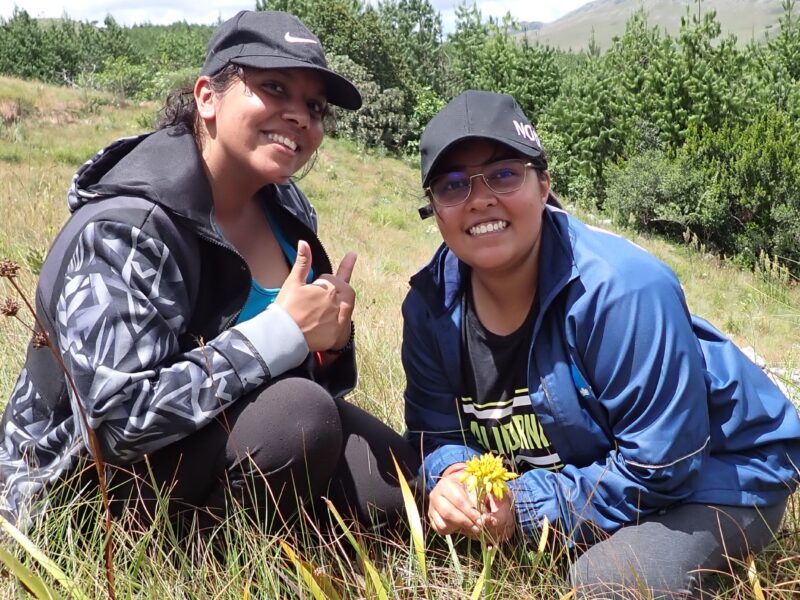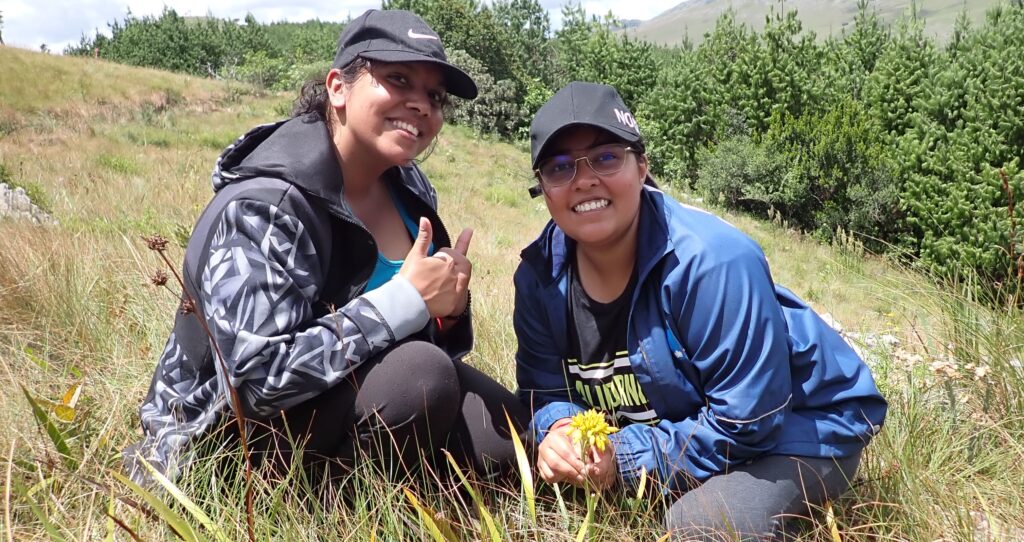
Found it: Saness Moodley (left) and Verona Govender, two postgraduate students from Wits University who are doing research on Mountainlands.
It is not always about the warm blooded, big and hairies on Mountainlands. Being located in a Centre of Plant Endemism means there are several plant species that occur only there. Some of these are threatened and scarce and so the more we can learn about them, the better for their long-term conservation.
And this is where two postgraduate students from Wits University’s School of Animal, Plant and Environmental Sciences come in. Verona Govender and Saness Moodley are currently doing field experiments in the grasslands in the reserve for their Ph.D degrees. Both students focus on flora and pollinators and include some of these endemic plants in their fieldwork. Their research is being supervised by Profs. Glynis Goodman-Cron, Ed Witkowski and Dr. Adam Shuttleworth.
Focus on grass aloes
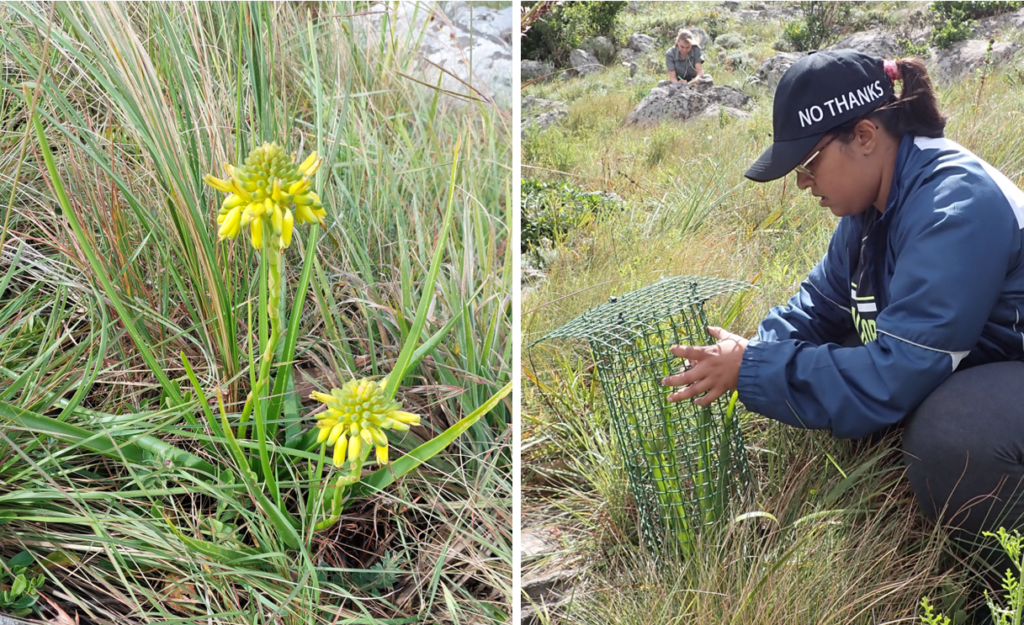
Yes, please. Verona carefully places a cage over an Aloe craibii plant.
Verona Govender investigates the pollination biology of two near-threatened and one endangered grass aloe. Their leaves look similar to those of grass from whence the term ‘grass aloe’, and they occur in the higher lying grasslands on Mountainlands. The three aloes are Aloe albida (white), A. craibii (yellow), and A. chortolirioides var. chortolirioides (mostly red). Her investigations will provide knowledge on the role of flower colour in influencing pollinators that facilitate successful pollination of aloes.
Out of this flows a whole bunch of questions that she needs to address, such as what type of pollinators visit the flowers, how successful are they in pollinating the flowers and the resultant setting of seed.
The Barberton area was once a hotspot for endemic grass aloe diversity but is now dominated by extensive timber plantations outside the reserves. And South Africa’s grasslands are amongst the most threatened ecosystems. As all three of these aloe species are endangered and only occur in fragmented grassland patches across the landscape, their conservation is of utmost concern.
One of the species, Aloe chortolirioides var. chortolirioides may occur in a range of different colours – from whitish pink to coral and yellow. Verona plans to establish if the colours influence the primary pollinator and its effectiveness. Among other questions she will also try to understand is what causes the variation of colour in this species, as well as the role of pollinators and colour as potential drivers of diversification in grass aloes.
For Verona’s work, cages were placed over Aloe craibii plants to exclude birds from visiting them to assess if birds have any roles as pollinators. She also placed trail cameras focused on caged and uncaged plants to photograph any insect or bird that visits the flowers. And then there are the hours of visual observations that she needs to do. She will later return to the reserve to collect seeds from the caged and uncaged plants to measure how successfully they were pollinated. She will repeat the same experiments with Aloe albida and Aloe chortolirioides var. chortolirioides.
A broader view
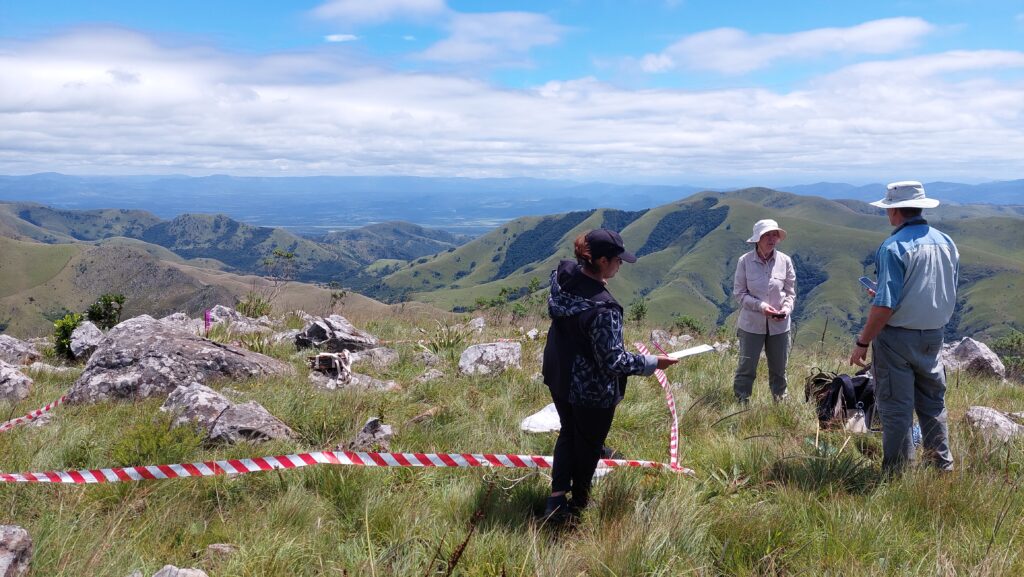
Could not ask for a more beautiful view: Saness (left) with Prof Goodman-Cron (middle) and her husband Mike discussing Saness’s monitoring plot.
Pollination is a very important event in the reproduction of plants and Saness’s study includes a broader vision relating to how pollinators influence community structure through their interactions with plants. Her work is also complex and she has several questions that need vigorous investigation. There is a mutualistic relationship between plants and their pollinators and the decline in one can lead to a decline in the other, which may lead to a loss of species. With her research she will aim to understand the relationships and interactions between the pollinators and various plant species in a mountain grassland.
Different kinds of plants carry different flowers, in different colours, numbers and heights and they flower at various times. One of her objectives is to investigate how these traits drive the relationships between the diverse plants flowering simultaneously, namely, competition and/or co-operation for pollinators, and how these processes contribute to forming a grassland community. This means Saness will have to link several patterns to assess co-flowering communities.
Saness will also investigate the importance of flowers that bloom at specific times, like late autumn or winter, when many other plants don’t flower so that those pollinators that are around will focus on these plants. She will use the specialised flowers of the subfamily Asclepiadoideae as study group as some of these plants, such as Asclepias velutina (classified as Vulnerable), flower in winter. This species is viewed as an ecological specialist while Asclepias stellifera (classified as Least Concern) that flowers in summer is a generalist and Saness will investigate and compare these two different species in terms of their breeding systems and pollinators.
For Saness’s study, different grassland areas at different elevations were marked where she could identify the different plants in bloom, their numbers and what pollinates them, while spending hours observing and photographing insects. She will return to these plots at different times of the year when different plants are in bloom.
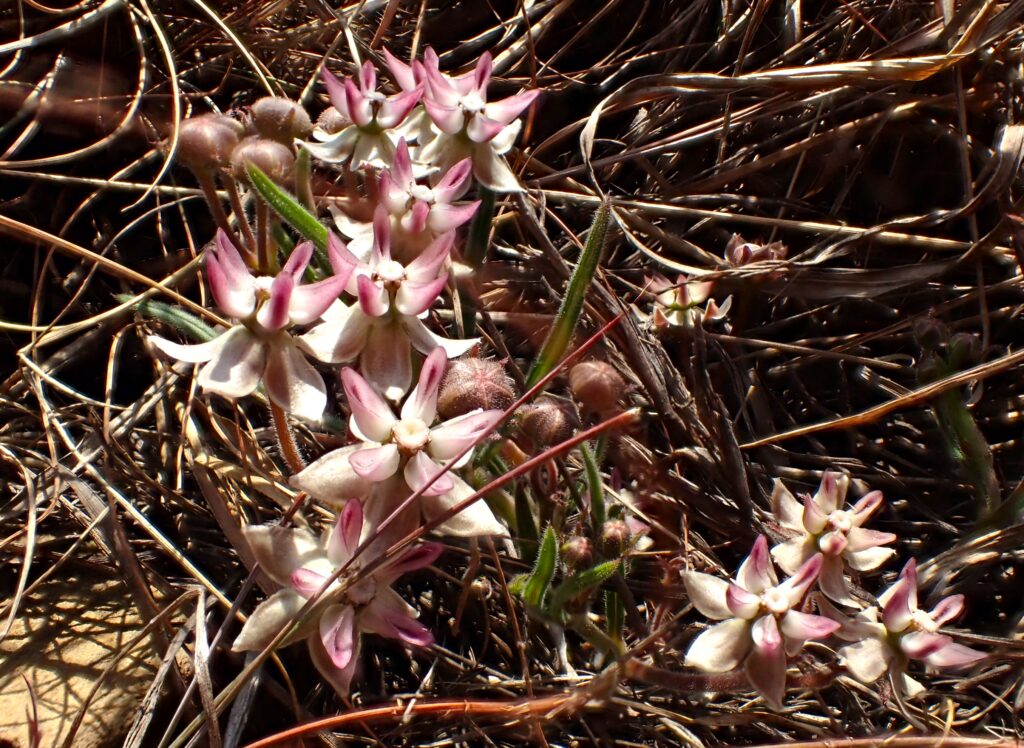
Asclepias velutina flowers photographed on Mountainlands in August which is winter in South Africa’s summer rainfall region.
Both the students will return periodically to Mountainlands to continue their field work. This time around Prof Goodman-Cron and her husband, Mike and a fellow student who has just completed her M. Sc. Degree, Emma Wright, assisted them with the practical part of setting up their experiments. The two studies are mutually supportive which means the students can work together in the same areas of the reserve contributing to a better understanding of the grassland plant species and their relationships with pollinators.
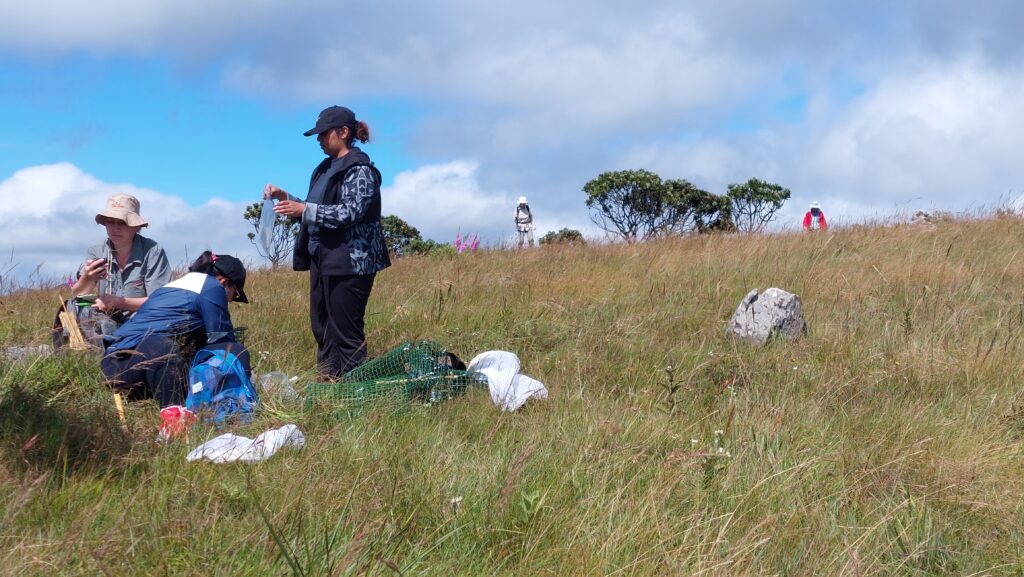
Lending a helping hand: Emma (left) and Saness helping Verona to prepare her aloe cages while Prof Goodman-Cron and her husband, Mike, look for Aloe craibii plants in the grasslands.

